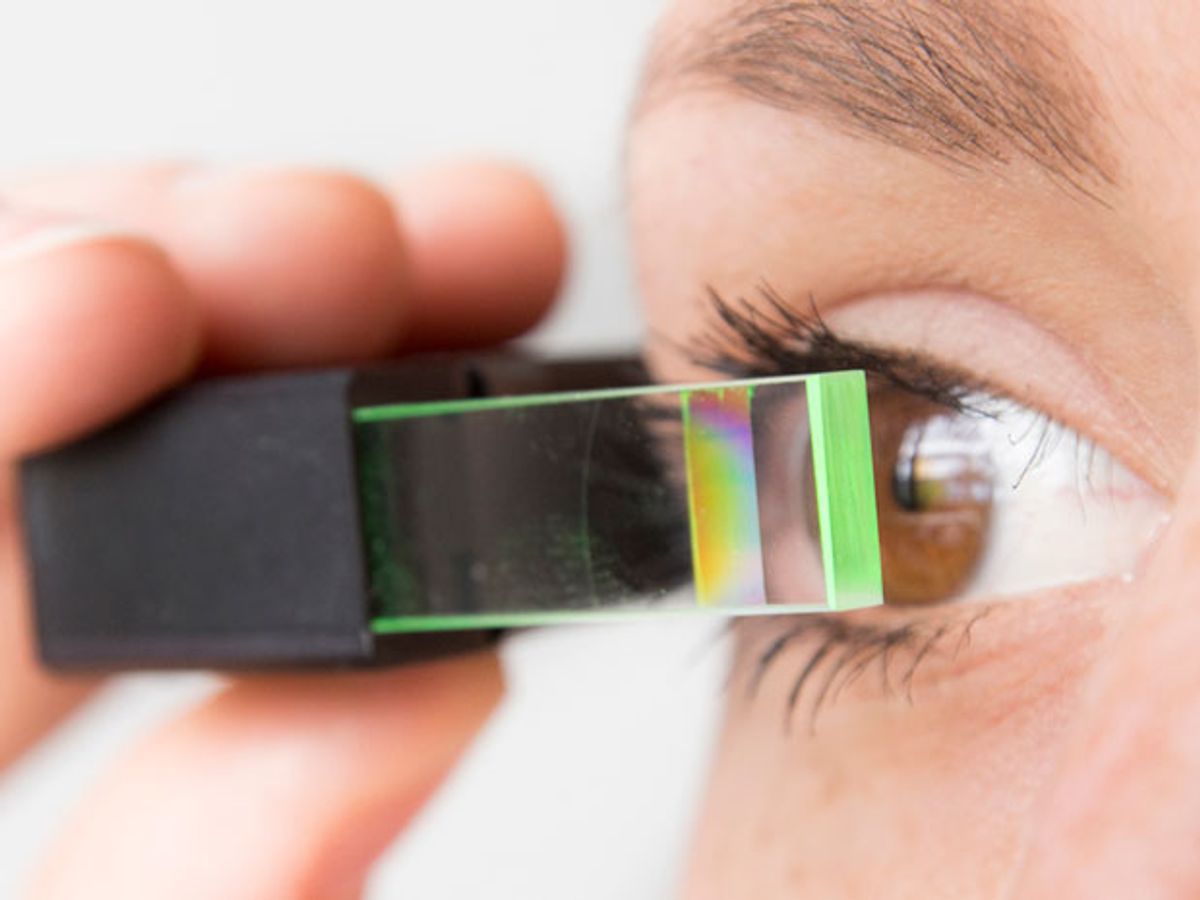The list of companies with an interest in augmented reality eyewear has grown long over the years and includes some of the biggest names: Microsoft, Google, and Sony. However, consumer acceptance has been lackluster, in part because these specs are still a bit bulky.
Researchers led by Peter Schreiber at the Fraunhofer Institute for Applied Optics and Precision Engineering IOF in Jena, Germany, say they’ve created demonstration models of data glasses that would be much smaller and less obtrusive than the specs available now.
The key to their design is the use of a glass waveguide for light, both for the transmission and display of images. "We have a very slim design for the eye-piece optics, which fits very well with the geometry of a wave guide," says Schreiber. A simple, elongated rectangular sheet of glass serves both as a wave guide and as the support for a small, transparent display of 8 by 15 millimeters near the eye.
A two-megapixel microdisplay produces the image at one end of the glass sheet. This image is coupled into the glass sheet by a diffraction grating—a thin microlattice deposited on the glass waveguide as a thin, transparent plastic film on the glass. This image travels through the glass sheet and is coupled out of the wave guide at the other end close to the eye of the user by a similar microlattice. Held close to the eye it can be viewed via an array of one-mm microlenses.
Unfortunately, using a waveguide for transmitting the image limits its definition on the display to about 800 x 600 pixels. "We have a very slim design, and we pay for this slimness in terms of projected pixels," says Schreiber. But this would not drastically limit the application of the specs, he claims. "If you want to use a simple navigation system, which only says, '500 meters to the right,' or …. 'there is a call on your smartphone,' or for simple graphics in a repair manual, then it will work well."
Up to now the researchers have produced two demonstration prototypes of their data glasses. One is a real near-to-eye display with a micro imager, but it isn’t see-through. The other system cannot display moving images, but is see-through, says Schreiber. "What we have to do in the future is to put both systems together, with a real micro imager and a waveguide for the see-through option,"he says.
An additional benefit of the Fraunhofer system is that by manipulating the images—image processing—one can correct for a user’s farsightedness. Your smartphone is connected wirelessly to your display, and you will have a smartphone app that will allow you to enter your degree of vision defect, such as +1 or +2, says Schreiber. The smartphone will then process the images, allowing you to see a sharp display, says Schreiber. He argues that moving most of the image processing power and operating software to a smartphone allows a more compact structure for the data glasses, and a longer battery life.
The technology they are developing might also be of use in several optical instruments, such as microscopes and micromanipulators, where transparent displays could be used for placing cross hairs or a controllable cursor in the view.
"For future optical solutions, we are now looking for partners, like startups, to develop products with them," says Schreiber.


